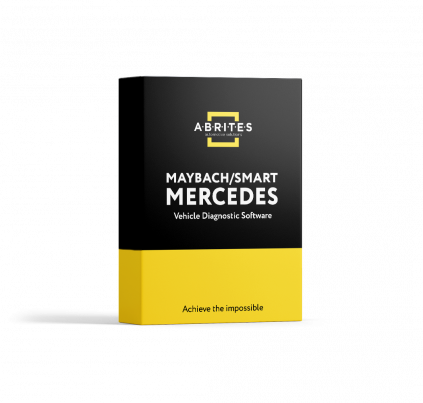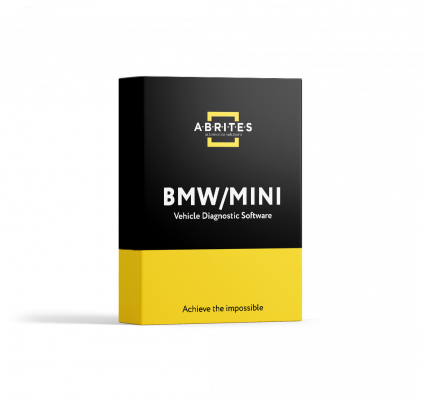
A BRIEF OVERVIEW OF THE ABRITES TOYOTA/LEXUS/SCION KEY PROGRAMMING FUNCTIONALITY
Understanding Toyota’s key programming functions is not an easy task. To get started, we need to base our knowledge on a solid foundation. To do that, let’s go back in time, as with most OBD, OBDII and manufacturer specific diagnostic and electronics in general we ought to set our sights on the early to mid 90s where it all began. This period was the genesis for all the diagnostics we know today, it was the birth of the immobilizer as a term and a physical representation of vehicle security.
To start with, we need to look at this genesis and what it was like.
In the beginning, Toyota started experimenting with 4C and 4D Texas transponders and the immobilizer systems were either integrated into the engine control unit, or separate boxes made by companies like Tokai Rika. After that, the transponders kept evolving, the systems began growing and spreading to more modules, other companies took on the responsibility for the protection of Toyota vehicles. From 40bit transponders, to 80bit, then 128bit… From Valeo to Visteon. More and more developments came and went throughout the 2000s and in today’s modern Toyotas. We at Abrites know the Japanese giant quite well and we know we can help our customers with almost any Toyota immobilizer related situation be it lost keys, adding keys or basically anything to do with diagnosing and resolving electronic issues with said cars, by OBD or dump from the immobilizer, cloning transponders, on a bench, in a car, whatever the situation might be we have got your back.
We have been working with and on Toyota vehicles and their derivatives for the past two decades which inevitably puts us in first place when it comes to solving issues with them. Our team recently returned from a visit to Automechanika Dubai 2021 and looking at our competitors there left me feeling proud. Why the pride, you may ask? Well, the fact that other companies are still catching up and are basically moving 10-12 months behind us makes me feel like that. The only thing that bugs me about it is that you guys, the readers of this blog, are not always as up to speed on who does what in the automotive diagnostic world. This is the purpose of today’s post – to bring you up to date on our Toyota endeavours. Without going deeper into self-indulgence from my “Forgot-about-Dre” high horse, it is time to move to the modern world of Toyota immobilizer systems.
With a firm foundation (and a short rant) beneath us, we can now enter the realm of serious modern Toyota key programming. This is where we must get technical on some of the terms we are going to use. With the introduction of the Toyota smart keys (keyless entry, keyless start, the jury is still out on what words go where) Toyota’s path reached a fork. They started developing two types of systems simultaneously. On the one hand, entry level, economy cars stayed with mechanical keys and Lexus and high-end Toyotas moved towards “Smart keys”.
Let’s get familiar with the first iteration of modern Toyota mechanical keys.
G-type of key, they typically have the letter “G” inscribed on the key blade, those are DST 80/80bit transponders. They come with a separate immobox and can be programmed when all keys are lost, you can add a key or you can clone the existing key. All that can be done via OBD or dump and the only real specific is that you need to prepare your transponder accordingly using PROTAG. You can use TPX1 transponders to start the car in emergency lost key situations as well as the TA36 transponder made by Abrites.
H-type mechanical keys, they are characterized by having the letter “H” inscribed on the key blade, they are 128bit transponder type, which are also known as DST AES. Adding a key is done via OBD, the procedure is as straightforward as anything else, you can use an Abrites TA30 if you do not have a key, but all keys lost programming is a bit more involved. It requires additional hardware and effort on your behalf, the Abrites diagnostics for Toyota user manual has a detailed description on the subject on page 13 and this video can also shed more light into how we program all keys lost for these vehicles. https://www.youtube.com/watch?v=7gaciWRp-yI
You will need the ZN069 to program the first key if all keys are lost. Also check this video out https://www.youtube.com/watch?v=uNQUaFh-gh0
If you have reached this point you are probably thinking “that is great and all, but there are other tools which claim the same, why should I care if you were the first or second to come up with these solution?!” That is a valid question and it would be even more valid if it wasn’t for the Smart keys programming functions we have. Up to 2018 there are many tools which can assist you, most of them have copied what others have done before them. We have videos on how to perform key programming on pre-2018 cars with AVDI and Abrites diagnostics for Toyota. The real problem comes when you reach the current Smart key generation. We have a solution for them right here, right now, not after 2-3 months, not “Our developers are working on it”, no, we have a tool you can buy today and do all keys lost, adding keys and basically everything you need tomorrow. Granted, it is not as straight forward as plugging the OBD to the car and programming away, but it is well described, videoed and written down in the manual. We have the solution for you right away. Besides, we are completely honest to what it can and cannot do, what models it supports and does not. Just check these links:
https://abrites.com/products/tn011
https://abrites.com/products/tn012
In addition to that, we offer you great module replacement options which are again unique to Abrites. ID Box reset, replacement of IMMO related modules – sure, Abrites has you covered:
https://abrites.com/products/tn009
But this is a topic for another day, so is this here, by the way https://abrites.com/products/tn010
The main goal of today’s article was to give you guys a brief overview of what Abrites offers for Toyota key programming. It was inspired by the fact that we don’t really have any real competitors in this field as we simply provide you with a well-documented, comprehensive tool to solve ALL your Toyota needs, we are honest and straightforward with its limitations and we have your interest in mind. We provide a manual, which is more like an encyclopaedia of knowledge, we present best practices based on experience, solutions based on problems we have encountered, and last but not least – step-by-step videos on each procedure we discuss.
Our solution is not magic, nor is it a mystery, so read, ask, consult us and we will help you. Here is a link to the manual where you should probably start: https://abrites.com/preview/pdf/abrites-diagnostics-for-toyota-lexus-scion-user-manual
Also, below are the videos on how to do each procedure step-by-step:
https://www.youtube.com/watch?v=yl2xQpvPb28
https://www.youtube.com/watch?v=7gaciWRp-yI
https://www.youtube.com/watch?v=uNQUaFh-gh0
https://www.youtube.com/watch?v=NPPSGDFmY2E
https://www.youtube.com/watch?v=x-yHy4FXIi8
Then, if you make up your mind on acquiring the abovementioned solutions, be sure to get in touch with our sales team or your local partner to discuss pricing and additional hardware. I will see you guys again on January 7th with an insight to 2022 at Abrites. Until then take care and stay positive.
Alek
Videos



Toyota Corolla/Camry 2020 All Keys Lost - Key Programming using AVDI and TN011
The TN011 special function for key programming for the latest Toyota vehicles. 1. All Keys lost for EU/US models; 2. No need to be connected to the official Toyota server; 3. The need to reset the Smart System is eliminated; 4. Corolla/Camry 2018+ with the newest Smart System is supported for all key lost and spare key programming.
 TCU Personalization Without FBS4 Data
TCU Personalization Without FBS4 Data
 BDC2 Replacement and Mileage Reset for BMW
BDC2 Replacement and Mileage Reset for BMW